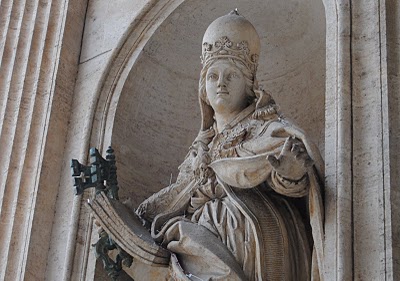Namadev
Tarot and neo-catharisme?
by BOUGEAREL Alain
Les Tarots ont-ils un lien avec le courant cathare ou néo-cathare voire avec des évangélistes franciscains radicaux ou apocalyptiques de la pré-Renaissance italienne?
…Aucune évidence historique – d’autant que les Cathares sont iconoclastres, n’est-ce pas?
Toutefois :
- comme je l’ai souligné dans le passé, les Tarots naissent bien dans un contexte culturel des cours lombardes où les courants néo-cathares sont puissants ;
- si l’on admet la possibilté d’une représentation d’un personnage réel sur les cartes des Tarots de la famille Visconti, alors la carte de la la Papesse – symboliquement la Foi chrétienne- – pourrait bien représenter l’ hérétique Soeur Manfreda Visconti brûlée par l’Inquisition.
La thèse initiée par l’historienne Moakley , suivie en cela par moi-même dans mon essai “Origines et histoire du tarot” , analysée puis réfutée par le chercheur O’Neill, suivi en cela par mon éminent confrère Ross Caldwell, m’apparaît de nouveau d’actualité de par les découvertes de Newmann reprise par Mary Greer :
”
Barbara Newman (aka Mona Alice Jean Newman) presented the most complete account in English of the Guglielmites in her From Virile Woman to WomanChrist: Studies in Medieval Religion and Literature, but it is in her more recent paper, “The Heretic Saint: Guglielma of Bohemia, Milan and Brunate,”
that we learn important details that make an attribution to Maifreda as
Papess much stronger than previously thought (all quotes and
information not otherwise attributed are from this article).”
http://marygreer.wordpress.com/2009/11/07/papess-maifreda-visconti-of-the-guglielmites—new-evidence/
NOTA
A propos de :
Tarots et néo-catharisme :
http://www.officieldelavoyance.org/spip.php?article608
Alain Bougearel A propos de :
La Papesse et Soeur Manfreda Visconti di Pirovano :
http://www.officieldelavoyance.org/spip.php?article877
October 14, 2010 at 4:45 am
BOUGEAREL Alain
See also :
http://www.facebook.com/editnotes.php?import#!/note.php?note_id=155516041155663&id=100001498838632
by BOUGEAREL Alain
Les Tarots ont-ils un lien avec le courant cathare ou néo-cathare voire avec des évangélistes franciscains radicaux ou apocalyptiques de la pré-Renaissance italienne?
…Aucune évidence historique – d’autant que les Cathares sont iconoclastres, n’est-ce pas?
Toutefois :
- comme je l’ai souligné dans le passé, les Tarots naissent bien dans un contexte culturel des cours lombardes où les courants néo-cathares sont puissants ;
- si l’on admet la possibilté d’une représentation d’un personnage réel sur les cartes des Tarots de la famille Visconti, alors la carte de la la Papesse – symboliquement la Foi chrétienne- – pourrait bien représenter l’ hérétique Soeur Manfreda Visconti brûlée par l’Inquisition.
La thèse initiée par l’historienne Moakley , suivie en cela par moi-même dans mon essai “Origines et histoire du tarot” , analysée puis réfutée par le chercheur O’Neill, suivi en cela par mon éminent confrère Ross Caldwell, m’apparaît de nouveau d’actualité de par les découvertes de Newmann reprise par Mary Greer :
”
Barbara Newman (aka Mona Alice Jean Newman) presented the most complete account in English of the Guglielmites in her From Virile Woman to WomanChrist: Studies in Medieval Religion and Literature, but it is in her more recent paper, “The Heretic Saint: Guglielma of Bohemia, Milan and Brunate,”
that we learn important details that make an attribution to Maifreda as
Papess much stronger than previously thought (all quotes and
information not otherwise attributed are from this article).”
http://marygreer.wordpress.com/2009/11/07/papess-maifreda-visconti-of-the-guglielmites—new-evidence/
NOTA
A propos de :
Tarots et néo-catharisme :
http://www.officieldelavoyance.org/spip.php?article608
Alain Bougearel A propos de :
La Papesse et Soeur Manfreda Visconti di Pirovano :
http://www.officieldelavoyance.org/spip.php?article877
October 14, 2010 at 4:45 am
BOUGEAREL Alain
See also :
http://www.facebook.com/editnotes.php?import#!/note.php?note_id=155516041155663&id=100001498838632





